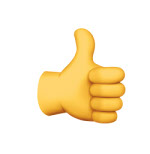Leave a comment, click here

MY
INTRODUCTION
MY
HYPOTHESIS
MY NULL
HYPOTHESIS
MY
QUESTION
MY
THEORY
MY
RESEARCH
MY
CONCLUSION
My
initial
research
question
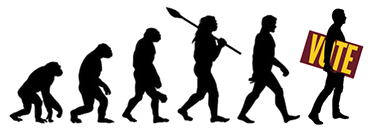
Might the Evolution of American Political Opinion
Mimic That of Natural Selection?
Darwin’s Theory of Natural Selection.
A
little
background
Is it possible to apply what I learned about Natural Selection to American politics? Is there a connection between POL 3085 and ANTH 1001? Does the evolution of American politics follow the process of Darwin’s Theory of Natural Selection, the process by which biological traits change in frequency in a population as a result of differential reproductive success? A change in allele frequency in a population over multiple generations is evolution.1 The theory argues species evolve to makes their life better and reproduction more profitable: We evolved to walk upright so we could hold food, tools and weapons (an oversimplification but you get the idea). Not all evolution is towards complication, there are worms that have regressed to a very simple state (some are currently holding office in Washington).2
Think of political opinion, in a similar light, as an evolutionary entity formed by hidden and not so hidden influences. How is evolution of political opinion similar to the evolution of species, including Homo sapiens? Are there correlations between organic evolution (the width of a beak, the size of a wing, the color of a feather3) and non-organic evolution (voter turnout over time, emerging acceptance of healthcare for all, etc.)?3
If we prove a correlation between nature and political opinion it could possibly open a window into understanding how the many small changes in the “allele” of society affect future political opinion. Further, if U.S. political opinion does mimic human genetic evolution, how might a political party use that to their advantage?
! Robert Boyd and Joan B. Silk, How Humans Evolved (W. W. Norton & Company, New York, 2018) 54.
2 How Humans Evolved, 7.
3 How Humans Evolved, 9.
4 Special thanks to emails (January 28, 2020) with Professor Michael L. Wilson, PhD,
University of Minnesota Twin Cities, Department of Anthropology
My question:
An allele is a variant form of a gene. Some genes have a variety of different forms, which are located at the same position, or genetic locus, on a chromosome. Humans are called diploid organisms because they have two alleles at each genetic locus, with one allele inherited from each parent.
Nature News. Nature Publishing Group. Accessed April 1, 2020. https://www.nature.com/scitable/definition/allele-48/.
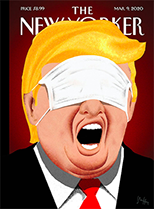
Have the American Democratic and
Republican parties moved further away
from each other ideologically today, than
they were in the year 2001, creating
an opening for a viable third party?
My
research
question
reined in
My hypothesis:
The country has never been as politically divisive as it is today. Personally, I have lost friends of many years over the political scene today. I am not alone in this situation. One explanation for this is the lack of anywhere for the true Independent to hang their hat (hopefully a Pork Pie). Imagine you are at an event looking for an alcoholic drink to enjoy with everyone else in the room. The problem is there is only wine to drink—you are not a fan—and the only choices are one red or one white. For you, the white is usually too sweet and red is usually too tart. So, you settle on the Chardonnay at one event instead of the Cabernet, or conversely, you settle on the Pinot Noir instead of the Riesling at another event. Not perfect but you made a choice.
The struggle and the importance of the independent voter is being felt more in this election than in past elections. The pure independent won’t vote if they don’t like the candidates. Or they’ll vote Green even knowing their candidate won’t win. “Screw it, I’m having a beer, not that crap wine they are offering.” In effect, they act as the Z variable.
Every once in a while, a third choice comes
along: Jesse Ventura is beer, Ralph Nader
is beer, Ross Perot is beer.1
1 Special thanks to a phone call (January 31, 2002) with Bill Hillsman,
President of North Woods Advertising and Guest Lecturer,
Harvard University, New Politics for the New Millennium, Spring 2020
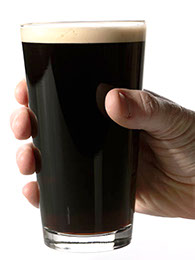
My
hypothesis
If Democrats and Republicans believe the opposing party is
polarizing ideologically further left/right, we will see a larger rift
between the two parties, an example of Disruptive Natural Selection.
This would not only make the ideological divide greater but
offer an opportunity for a true third party to emerge.
My theory:
My
theory
Republicans and Democrats are moving further apart ideologically.
Republicans and Democrats believe it is the other party
that has become more extreme in their viewpoints.
There is no middle ground vote within the current two-party system.
There is opportunity for a third-party to be a viable alternative.
My null hypothesis:
My
null hypothesis
Democrats and Republicans see no
polarizing, ideologically between the two parties, with
no opportunity for a true third party to emerge.
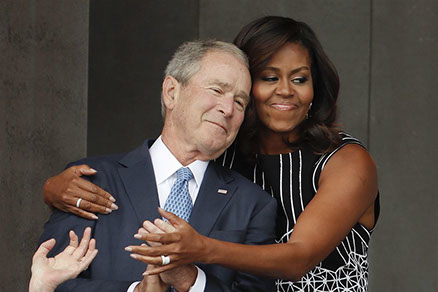
Null hypothesis:
What we would observe if there was no relationship between the variables. It's always possible that it looks like there's a relationship, but there actually isn't, therefore the null hypothesis is true).
Professor Jane Lawrence Sumner, Class Presentation POL 3085, February 25, 2020
My research:
Just as $388 is a lot better than having $1,
the same holds true for research.
Survey questions for my research:
What political party do you most closely align with?
Democratic Party/DFL, Republican Party, Libertarian Party, Green Party, Other, None of these
Since 2001, would you say Democrats are becoming more polarized to the left on economic policies?
1- 5 scale: Not at all, Very much
Since 2001, would you say Republicans are becoming more polarized to the right on economic policies?
1- 5 scale: Not at all, Very much
Since 2001, would you say Democrats are becoming more polarized to the left on social policies?
1- 5 scale: Not at all, Very much
Since 2001, would you say Republicans are becoming more polarized to the right on social policies?
1- 5 scale: Not at all, Very much
My research question, part one:
My
results
Have the American democratic
and Republican parties moved further away from each other ideologically today than they were in 2001?
<<< Here's what I found out.
That's how many people—388—answered my survey for this research
query, making this a large-N, Non-Experimental Research design.
There are three research design strategies:
Experiments: you randomly assign a treatment, then compare an outcome among those who did and didn't receive it.
Small-N observational designs: you use deep, rich knowledge of a few cases to eliminate threats to causality.
Large-N observational designs: you use lots and lots of data to uncover patterns among variables, and use statistics to eliminate threats to causality.
Professor Jane Lawrence Sumner, Class Presentation POL 3085, February 4, 2020
My results on research question part two:
My final research question looked at the
possibility of a viable third party.
In a primary election, would you consider
voting outside of the two-party system?
Yes No Maybe
Would America be better served with a viable third party?
Yes No Maybe
My
results
My conclusion:
Scatter plot
Distance chart
Scatter Plots
Scatter plots are a great first step for assessing the strength and direction of a relationship between two continuous variables. Sometimes the relationships are really obvious, but sometimes they are not. These scatter plots do not show a correlation. The red line indicates the residual line, what is left over of Y after we've accounted for X. This line indicates the best line for the closest fit to the data dots.
An example of a
scatter plot representing
statistically significant
results.
Professor Jane Lawrence Sumner,
Class Presentation POL 3085, April 2, 2020

Distance chart
A statistical distance quantifies the distance between two statistical objects, which can be two random variables, or two probability distributions or samples, or the distance can be between an individual sample point and a population or a wider sample of points. A distance between populations can be interpreted as measuring the distance between two probability distributions and hence they are essentially measures of distances between probability measures. Where statistical distance measures relate to the differences between random variables, these may have statistical dependence, and hence these distances are not directly related to measures of distances between probability measures.
In this case, we see a higher negative correlation, indicating no correlation to our hypotheses.
“Definitions for Statistical Distancesta·Tis·Ti·Cal Dis·Tance.” What does statistical distance mean? Accessed April 25, 2020. https://www.definitions.net/definition/statistical distance.
My
conclusion
My Conclusion is totally inconclusive.
My dataset was severely skewed towards Democrats, representing 74.6 percent, Republicans just 8.0 percent and all others accounting for 17.0 percent of the 386 respondents. Clearly this does not represent the voting public, but it is what I had to work with. What can we learn from this? Respondents do see a shift in Democrats and Republicans moving further apart in their respective directions. This is most telling in the mosaic plots. While I believe there is some evidence showing this shift, I was not able to determine if there is enough evidence for a viable third party, the Holy Grail of American politics.
Future research would certainly require a more representative and robust dataset. It would be beneficial as well if the questionnaire were reduced to the number of questions needed for this particular hypothesis and not a questionnaire with hundreds of questions. It also might be helpful to include questions comparing to other democratic countries that have viable third parties and see if a comparison to them might loosen voters perception.
While it’s nice to see the late President Bush and President Clinton as close friends, and Michelle Obama and President George W. as tight, sadly I think the politics of today and the foreseeable future is more like that of Nancy Pelosi and Mitch McConnell.
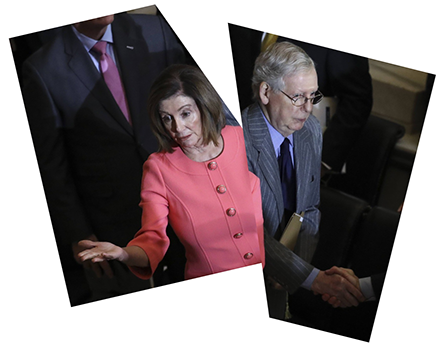
My home:
